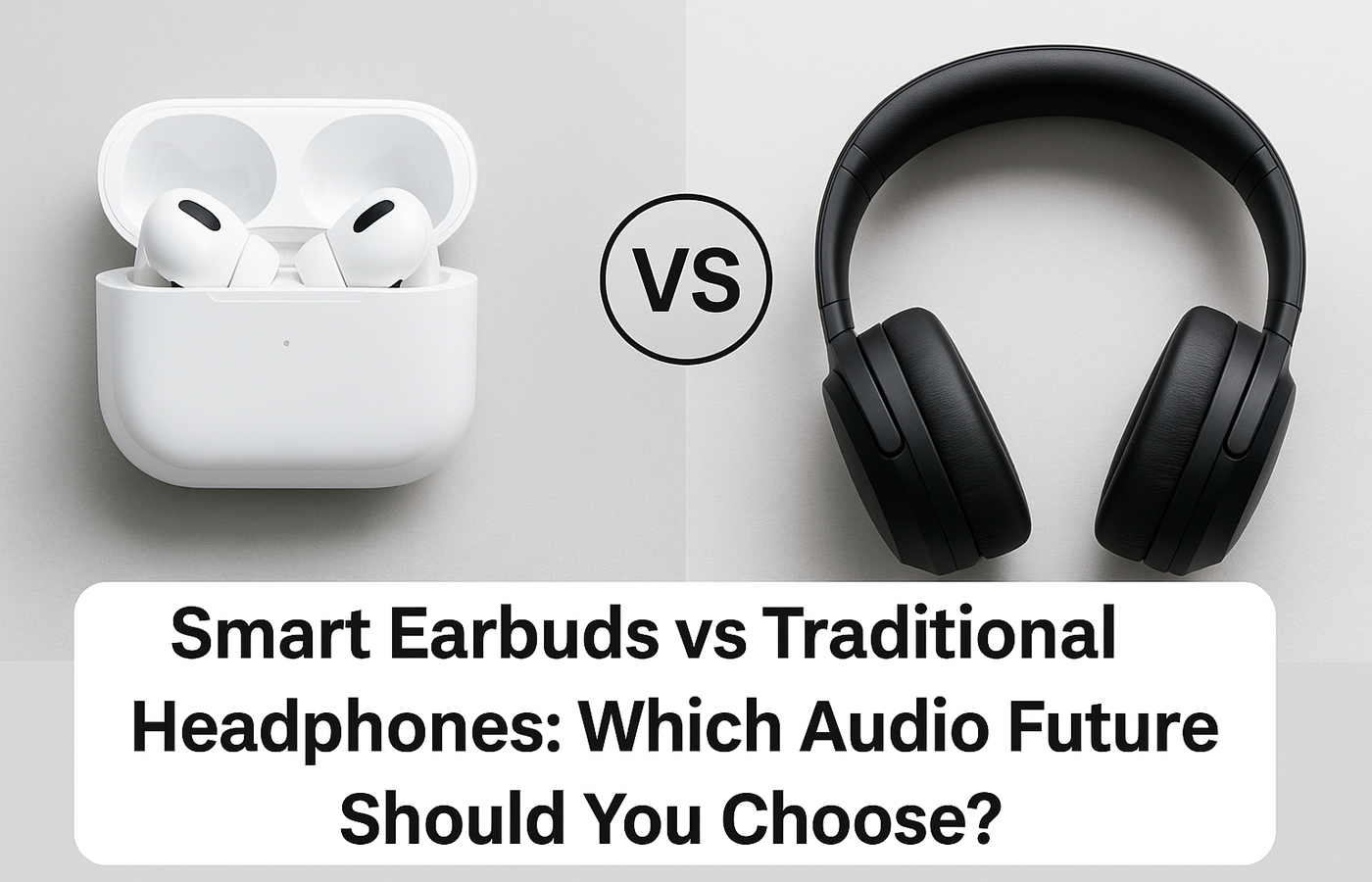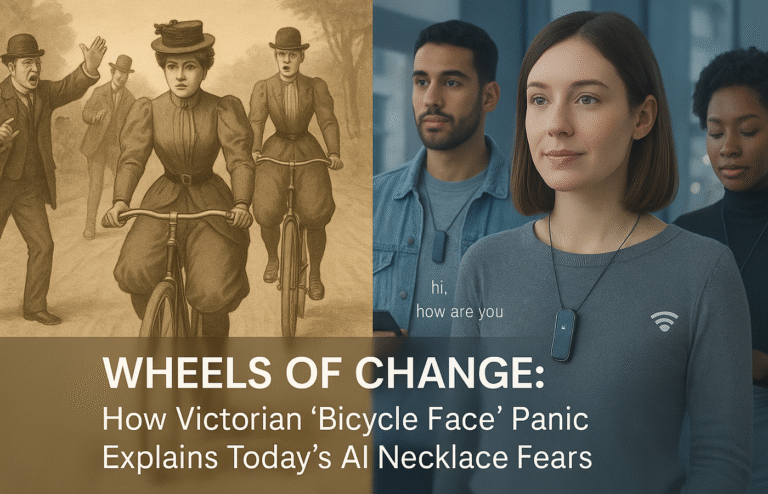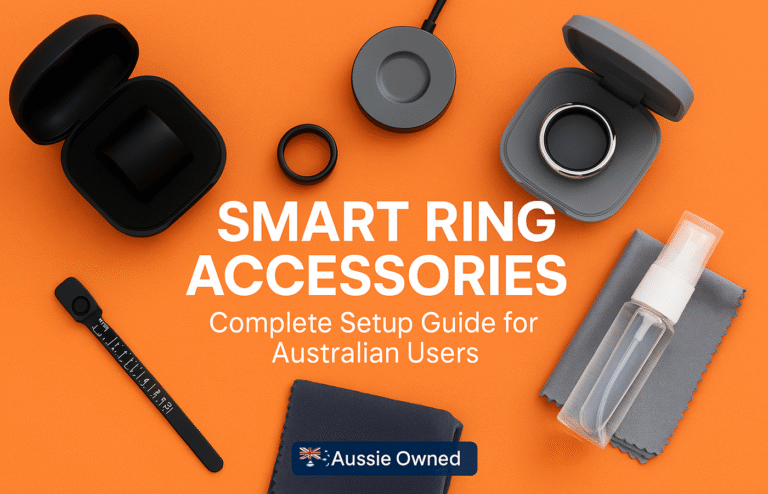Smart Earbuds vs Traditional Headphones: Australia’s AI Audio Revolution Guide
Smart earbuds use AI algorithms for adaptive listening experiences, whilst traditional headphones deliver passive audio reproduction. The choice depends on lifestyle priorities rather than clear technological superiority.
Smart Earbud Leaders:
● Apple AirPods Pro (2nd Gen): $399 AUD with personalised spatial audio and hearing aid capabilities
● Samsung Galaxy Buds3 Pro: $350-400 AUD featuring real-time translation and adaptive noise control
● Sony WF-1000XM4: $200-300 AUD offering excellent AI noise cancellation value
Key Advantages:
● Smart earbuds: Adaptive noise cancellation, environmental awareness, compact portability, AI voice enhancement
● Traditional headphones: Superior audio quality, battery independence, durability, professional applications
Verdict: Many enthusiasts use both technologies for different scenarios—earbuds for commuting, traditional headphones for critical listening sessions.
Smart Earbuds vs Traditional Headphones: Which Audio Future Should You Choose?
The audio world is experiencing its biggest transformation since the shift from vinyl to digital. Whilst traditional headphones continue to deliver exceptional sound quality, smart earbuds powered by artificial intelligence are fundamentally changing how we experience audio. But does this revolution represent genuine innovation, or is it simply trendy tech wrapped in marketing buzz?
For Australian consumers navigating this rapidly evolving landscape, the choice between smart earbuds and traditional headphones has become more complex than ever. Let’s explore what these AI-powered audio devices actually offer and whether they justify replacing your trusty headphones.
Understanding the AI Audio Revolution
Smart earbuds aren’t simply wireless headphones with extra features—they represent a complete paradigm shift towards intelligent, adaptive listening experiences. Whilst traditional headphones deliver passive audio reproduction, smart earbuds actively analyse your environment, preferences, and listening habits to optimise your audio experience in real-time.
This intelligence manifests through computational audio processing, where sophisticated AI algorithms continuously adjust noise cancellation, equalisation, and spatial audio based on your surroundings. Rather than offering fixed audio settings, these devices learn from your behaviour and automatically adapt to different scenarios throughout your day.
However, this complexity raises important questions about whether average consumers actually need or want this level of technological sophistication in their audio devices. The answer largely depends on your lifestyle, priorities, and comfort level with AI-driven technology.
AI Features That Actually Matter
Adaptive Noise Cancellation represents perhaps the most significant advancement in smart earbud technology. Unlike traditional active noise cancellation that applies consistent filtering, AI-powered systems continuously monitor your environment and adjust noise cancellation intensity accordingly. When you’re on a busy Sydney train, the system automatically increases cancellation for low-frequency rumble. Conversely, when you’re walking through a park, it reduces cancellation to maintain environmental awareness for safety.
Spatial Audio Intelligence creates personalised 3D soundscapes that adapt to your head shape and movement. Using data from your device’s sensors, AI algorithms calculate how sound should reach your ears to create an immersive, cinema-like experience. This technology particularly shines when watching movies or playing games, though its benefits for music listening remain debatable among audio purists.
Voice Enhancement Technology represents a practical breakthrough for phone calls and video conferences. AI algorithms can isolate your voice from background noise, suppress wind interference, and even enhance speech clarity for others on the call. For remote workers and frequent communicators, this technology genuinely improves daily productivity.
Environmental Awareness Features use AI to detect when you’re speaking to someone nearby, automatically lowering music volume and enhancing transparency mode. Some devices can even identify dangerous sounds like sirens or car horns, ensuring you remain aware of critical environmental cues whilst listening to music.
Current Smart Earbud Champions in Australia
Apple AirPods Pro (2nd Generation) lead the Australian market with their H2 chip delivering computational audio magic. Priced at $399 AUD RRP, they offer personalised spatial audio, adaptive transparency, and now include hearing health features that can function as clinical-grade hearing aids. Their seamless integration with iPhones makes them particularly attractive for Apple ecosystem users.
Samsung Galaxy Buds3 Pro bring competitive AI features with their dual-amp, two-way speaker system. Available for approximately $350-400 AUD RRP, they feature adaptive noise control, real-time translation through Samsung’s AI ecosystem, and impressive 24-bit/96kHz audio quality when paired with compatible Galaxy devices.
Sony WF-1000XM4 continue to impress with their V1 processor delivering industry-leading noise cancellation combined with AI-powered adaptive sound control. Whilst not the newest model, they’re frequently available for $200-300 AUD, offering excellent value for consumers wanting proven AI audio technology without premium pricing.
These devices showcase how different manufacturers approach AI audio, with Apple focusing on ecosystem integration, Samsung emphasising translation and connectivity, and Sony prioritising pure noise cancellation performance.
Where Traditional Headphones Still Reign
Audiophile Sound Quality remains the domain of traditional headphones, particularly in higher price ranges. Premium wired headphones like the Sennheiser HD 660S or Audio-Technica ATH-M50x deliver precise frequency response and soundstage characteristics that current smart earbuds simply cannot match. The physics of larger drivers and dedicated amplification still provide advantages that miniaturisation cannot overcome.
Battery Independence offers reliability that wireless devices cannot provide. Traditional wired headphones never run out of power, eliminate concerns about charging cases, and avoid the frustration of dead batteries during critical listening sessions. For studio work, long flights, or marathon gaming sessions, this reliability proves invaluable.
Durability and Repairability make traditional headphones more sustainable long-term investments. When the cable breaks on quality headphones, you can replace it. When smart earbuds stop working, you typically replace the entire device. This economic and environmental consideration becomes increasingly relevant as consumers seek sustainable technology choices.
Professional Applications still favour traditional headphones for critical listening scenarios. Audio engineers, musicians, and content creators rely on the neutral frequency response and consistent performance that traditional studio monitors provide. Smart earbuds’ AI processing, whilst impressive for consumer use, can interfere with accurate audio monitoring.
Real-World Performance Comparison
Battery Life creates the most significant practical difference between these technologies. Traditional wireless headphones typically provide 20-30 hours of continuous playback, whilst smart earbuds usually offer 4-6 hours per charge with additional power from their charging cases. The convenience of smart earbuds’ compact charging cases partially offsets this limitation, but heavy users might find themselves constantly managing battery levels.
Audio Quality comparisons reveal nuanced differences rather than clear winners. Smart earbuds excel at dynamic range optimisation and environmental adaptation, often making compressed streaming audio sound more engaging. However, traditional headphones typically offer superior detail retrieval and soundstage accuracy for high-quality source material. The choice depends on whether you prioritise adaptive enhancement or faithful reproduction.
Comfort and Fit vary significantly based on individual ear anatomy and usage patterns. Smart earbuds work well for active lifestyles and commuting but can cause fatigue during extended listening sessions. Traditional over-ear headphones distribute weight more evenly but become cumbersome for mobile use. In-ear traditional headphones offer a middle ground but lack the advanced comfort optimisation that AI-powered fit detection provides.
Connectivity Reliability generally favours traditional wired connections, though modern wireless implementations have dramatically improved. Smart earbuds’ sophisticated processing can occasionally introduce audio latency or connectivity glitches that traditional Bluetooth headphones avoid. However, features like automatic device switching and intelligent connection management often outweigh these occasional issues.
Australian Market Considerations
Pricing Dynamics reveal significant differences in value propositions. Entry-level smart earbuds with basic AI features start around $150-200 AUD, whilst premium models reach $400-450 AUD. Comparable traditional headphones span an even wider range, from $50 AUD for decent wired models to $500+ AUD for audiophile options. However, smart earbuds often require ongoing costs through subscription services or replacement cycles that traditional headphones avoid.
Local Climate Challenges affect both technologies differently. Australia’s heat and humidity can impact battery life in smart earbuds and cause discomfort during extended wear. Traditional headphones with breathable ear pads often handle hot climates better, though their larger size can become uncomfortable in extreme heat. Sweat resistance ratings become crucial considerations for both technologies in Australian conditions.
Carrier Integration provides unique advantages for smart earbuds in Australia’s mobile-centric culture. Features like real-time translation, voice assistant integration, and seamless switching between calls and media work particularly well with Telstra, Optus, and Vodafone networks. Traditional headphones require manual switching and cannot leverage these network-integrated features.
Making the Right Choice for Your Lifestyle
Commuting and Travel scenarios generally favour smart earbuds’ adaptive noise cancellation and compact form factor. The ability to automatically adjust to train noise, aeroplane engines, or busy streets without manual intervention provides genuine convenience. However, long-haul flights might benefit from traditional headphones’ superior battery life and comfort during extended wear.
Work and Productivity requirements vary significantly based on your role. Creative professionals might prefer traditional headphones’ neutral sound reproduction, whilst remote workers could benefit from smart earbuds’ advanced call quality and environmental awareness features. The choice depends on whether you prioritise accurate audio monitoring or enhanced communication capabilities.
Fitness and Active Lifestyles clearly favour smart earbuds’ secure fit, sweat resistance, and hands-free operation. Traditional headphones simply cannot compete with earbuds’ stability during exercise, though some prefer on-ear models for gym workouts where ambient awareness matters less.
Entertainment and Gaming present mixed scenarios. Smart earbuds excel for mobile gaming and streaming content, particularly with their spatial audio capabilities. However, serious gaming and home entertainment might benefit from traditional headphones’ superior soundstage and the ability to drive demanding audio without battery concerns.
The Verdict: Evolution, Not Revolution
Smart earbuds represent genuine innovation in audio technology, offering convenience and adaptive features that traditional headphones cannot match. However, they haven’t rendered traditional headphones obsolete—rather, they’ve created distinct use cases where each technology excels.
The decision ultimately depends on your priorities. If you value convenience, portability, and intelligent adaptation to your environment, smart earbuds justify their premium pricing and technological complexity. Conversely, if you prioritise pure audio quality, reliability, and long-term value, traditional headphones remain compelling choices.
Interestingly, many audio enthusiasts find themselves using both technologies for different scenarios—smart earbuds for commuting and casual listening, traditional headphones for critical listening and extended sessions. This hybrid approach recognises that no single audio device can perfectly serve every situation.
The future likely holds continued convergence between these technologies, with traditional headphones incorporating more smart features whilst earbuds improve their fundamental audio quality. For now, Australian consumers have access to excellent options in both categories, making this an exciting time to explore how artificial intelligence can enhance your audio experience.
Whether you choose the adaptive intelligence of smart earbuds or the proven reliability of traditional headphones, the most important factor remains finding devices that genuinely improve your daily listening experience rather than simply offering the latest technological features.








